#Conservation
Text
EEEEEEEE EEEEEEEEE EEEEEEE
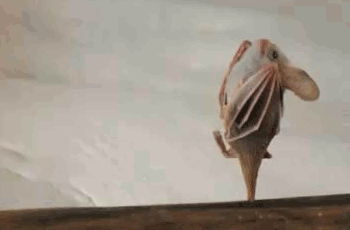
That's right! It's International Bat Appreciation Day! We share our planet with over 1400 species of bat, making the second most abundant mammal order, and they perform a wide variety of ecological roles, from dispersing seeds to pollinating flowers to eating thousands of insects in a single night! Over 200 bat species are listed as Threatened by the International Union for the Conservation of Nature--that is over 14 percent of all bats!
YOU can help endangered bats today by donating to Pennsylvania Bat Rescue at this link. This PA-based organization rehabilitates sick or injured bats and helps educate people like you and me in how we can create more bat-friendly environments.
If you want to learn about particularly-cool bat species native to New Zealand, check out this Consider Nature article on the Pekapeka, the bat that walks:
For the rest of the day, Consider Nature will be bat-bombing Tumblr with some of our favorite bat species to share them with the world!
Alt text: a small brown bat stretching its wings with the kind of fabulous flourish that would impress Ryan Evans.
#animals#nature#science#biology#wildlife#conservation#environment#bats#international bat appreciation day#batbombing
4K notes
·
View notes
Text
am I buying dolphin safe tuna? am I buying bat safe tequila? am I buying orangutan safe candy? am I buying bird safe windows? am I buying coral safe sunscreen? am I
161 notes
·
View notes
Text
#the killers#elephants#the craft#louisa khovanski#2000s scene#the murder of sonic the hedgehog#conservation#preschoolers#lady gaga#bfdi#bowser#photoshoots
225 notes
·
View notes
Text
https://jessica-780.mxtkh.fun/i/IRw0lfy
#astro notes#demisexual#tom ellis#conservation#country music#rinharu#preschoolers#the wolf among us#rose mcgowan#choi san#lady gaga#cage slave#submit to be featured!#bfdi#wallpaper
124 notes
·
View notes
Text
The latest snow survey and water supply bulletin from the BC River Forecast Centre has provincial officials worried about the coming spring and summer months.
The report said B.C.’s snowpack is at 63 per cent of normal right now, which is the lowest in 50 years.
Last year at this time, B.C.’s provincial snowpack average was at 88 per cent.
“We know this is concerning news. Communities around B.C. experienced serious drought conditions last summer,” B.C. Minister of Water, Land and Resource Stewardship Nathan Cullen said.
“It fuelled the worst wildfire season ever, harmed fish and wildlife, and affected farmers, ranchers, First Nations and industry.” [...]
Continue Reading.
Tagging: @newsfromstolenland
#cdnpoli#British Columbia#environment#flora & fauna#conservation#Indigenous politics#environmental racism
62 notes
·
View notes
Note
Hiya! Would you be willing to explain why keeping captive right whales is completely nonviable, as you mentioned? I’m fascinated, but the adhd simply will not let me parse scientific papers.
That's a fantastic question! While it would be wonderful if captive breeding were a viable option for this critically endangered species, it just isn't possible under any realistic conditions.
For starters, their size. Orcas are the largest mammals successfully held in captivity, and we all know how difficult (and controversial) that is, with only a very small handful of facilities ever pulling it off with any semblance of success. Tilikum, the largest captive orca (although I believe that record has since been overtaken by a male in China), was 22.5 feet (6.9 meters) long and weighed 12,500 pounds (5,700 kg). Most other orcas in human care, particularly the females, are considerably smaller. Compare that to a northern right whale. Even the smallest adults are over 40 feet long—double Tilikum's length—and weigh 88,000 pounds (40,000 kg)—seven times his weight—while the biggest specimens on record reached up to 61 feet (18.5 m) and an incredible 234,000 pounds (106,000 kg).
A tank for an animal that size would be far beyond anything we have the ability to engineer and maintain. Think of how deep it would have to be for the whale to even turn around! The water pressure would be astronomical, wreaking havoc on the building materials even if it were possible to build the structure. And remember—someone has to dive to clean it! Our theoretical right whale habitat would have to be a sea pen, but even the 100-acre facilities proposed with orcas in mind are nowhere near deep enough. While right whales are considered to inhabit "coastal" waters, they do not live right up by the shoreline, like certain orca ecotypes and other small delphinids. They are a pelagic species, designed to live out in the open water column, as are all baleen whales. So, the pen would have to be a floating habitat miles out into the open water (think of an offshore oil rig), with netting sturdy enough to not be destroyed by a 50 ton whale and long enough to extend hundreds of feet to the ocean floor. We're talking probably thousands of square miles of netting, that would have to be routinely inspected for safety and upkeep. So, you would probably need a submersible, since no human can dive that deep. On top of that, it would be difficult to find such a larger stretch of ocean in their habitat without shipping lanes, underwater noise, or pollution. And let's just forget about the logistics of staffing that place—or worse, funding.
Additionally, we wouldn't be able to feed them by tossing fish into their mouth like with dolphins. Northern right whales feed on tiny crustaceans and zooplankton, cruising along and filtering the creatures from the water with their baleen. Assuming our right whale keepers were somehow able to acquire the insane amount of food the whale requires (potentially over 5000 pounds of zooplankton a day), it would need to be scattered throughout the massive habitat to facilitate feeding. I imagine this would probably look something like the way Georgia Aquarium feeds their whale sharks from a little boat, although on a much larger scale. And since the food obviously can't be kept alive, we would need to develop someway of delivering the daily vitamins that are lost in the freezing process—and to keep hundreds of tons of krill frozen on a floating kitchen in the middle of the ocean.
Of course, the ultimate goal of this project would be to breed northern right whales... that means we need to take everything we just talked about and double it, at a bare minimum. For the breeding program to be successful, it would need a whole lot more than just two whales. And unfortunately, even if we lived in world with magical floating thousand-acre sea pens, unlimited krill, and endless money... we still don't know if it would even work. Right whale breeding habits are poorly understood, with the whales mating in cold northern waters before migrating 1,000 miles south to calve. Despite our best theoretical efforts, these migratory patterns could very well be necessary for successful reproduction.
Thank you again for the ask! This was actually a lot of fun to think about! If you want to read about JJ, the only baleen whale ever successfully housed in (temporary) human care, you can find an article and pictures here.
#still working through my inbox#the frequency at which I answer will slow down now that I'm back on clinics#northern right whale#baleen whales#cetaceans#marine mammals#conservation#answered asks#funlovingfuzzball
36 notes
·
View notes
Text
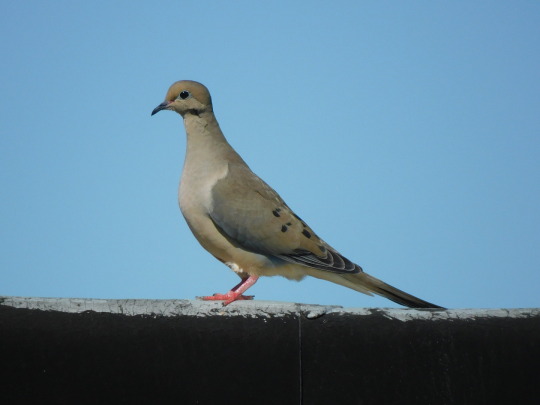


mourning dove (Zenaida macroura)
got some photos of this guy preening, i love how silly birds look when they’re preening
#mourning dove#conservation#nature#biology#wildlife#wildlife photography#bird photography#birds#birding#birdblr
47 notes
·
View notes
Text
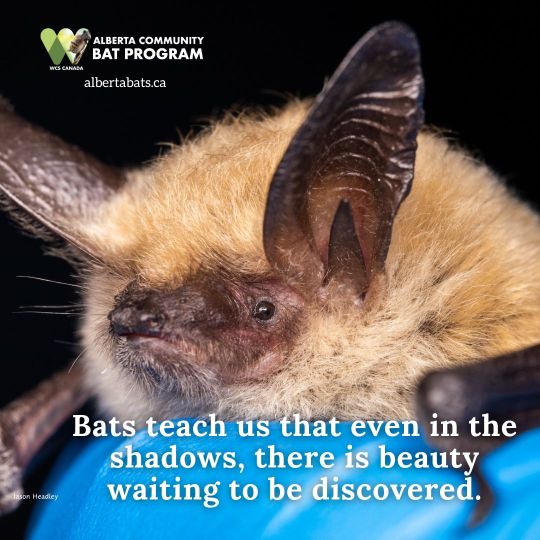
Happy Bat Appreciation Day!
#bats#bats need friends#bat conservation#conservation#alberta bats#endangered species#bat appreciation day
22 notes
·
View notes
Text
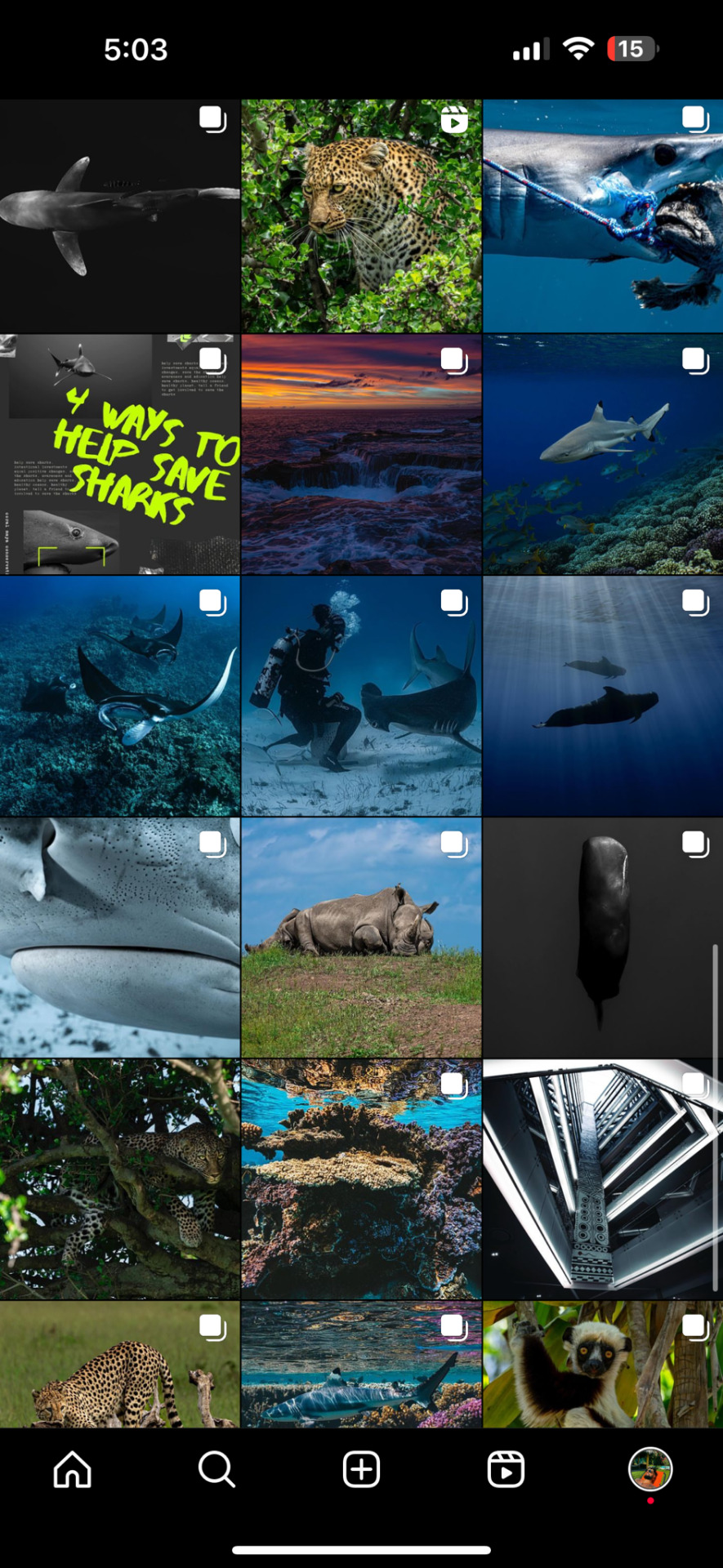
Haven’t been here in forever but if yall wanna go check my work out as a wildlife/ underwater photographer working in ocean, shark & reef conservation and story telling here is my ig:
@kalixdiaz
21 notes
·
View notes
Text
Im fucking sobbing looking at the new black footed cat at Utah's Hogle zoo
Shes just a fucking baby

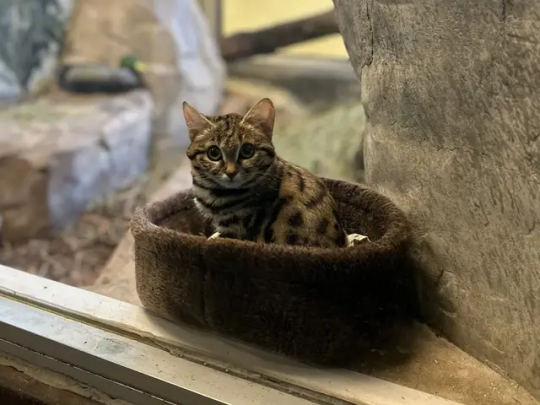
Baby with a 60% successful kill rate
#wrenfea.article#theres a video in the article#her name is gaia and shes 8 months#shes part of the AZA breeding program#i now have a reason to visit utah#leetle baby gorl#black footed cat#conservation news#conservation#zoos#animals#also the highest successful kill percentage for big cats is like. 25%#so 60% is fucking crazy
49K notes
·
View notes
Text

WELCOME BACK YELLOW-CRESTED HELMETSHRIKE!!!
25K notes
·
View notes
Text
Hey kid

Time to learn about tomato frogs.
This weird frog blows up like a balloon and makes glue. Click below to learn more:
2K notes
·
View notes
Text
"In one of Africa’s last great wildernesses, a remarkable thing has happened—the scimitar-horned oryx, once declared extinct in the wild, is now classified only as endangered.
It’s the first time the International Union for the Conservation of Nature (IUCN), the world’s largest conservation organization, has ever moved a species on its Red List from ‘Extinct in the Wild’ to ‘Endangered.’
The recovery was down to the conservation work of zoos around the world, but also from game breeders in the Texas hill country, who kept the oryx alive while the governments of Abu Dhabi and Chad worked together on a reintroduction program.
Chad... ranks second-lowest on the UN Development Index. Nevertheless, it is within this North African country that can be found the Ouadi Rimé-Ouadi Achim Faunal Reserve, a piece of protected desert and savannah the size of Scotland—around 30,000 square miles, or 10 times the size of Yellowstone.
At a workshop in Chad’s capital of N’Djamena, in 2012, Environment Abu Dhabi, the government of Chad, the Sahara Conservation Fund, and the Zoological Society of London, all secured the support of local landowners and nomadic herders for the reintroduction of the scimitar-horned oryx to the reserve.
Environment Abu Dhabi started the project, assembling captive animals from zoos and private collections the world over to ensure genetic diversity. In March 2016, the first 21 animals from this “world herd” were released over time into a fenced-off part of the reserve where they could acclimatize. Ranging over 30 miles, one female gave birth—the first oryx born into its once-native habitat in over three decades.
In late January 2017, 14 more animals were flown to the reserve in Chad from Abu Dhabi.
In 2022, the rewilded species was officially assessed by the IUCN’s Red List, and determined them to be just ‘Endangered,’ and not ‘Critically Endangered,’ with a population of between 140 and 160 individuals that was increasing, not decreasing.
It’s a tremendous achievement of international scientific and governmental collaboration and a sign that zoological efforts to breed endangered and even extinct animals in captivity can truly work if suitable habitat remains for them to return to."
-via Good News Network, December 13, 2023
#chad#abu dhabi#north africa#rewilding#endangered species#conservation#zoology#conservation biology#oryx#good news#hope#texas#big game#animals#endangered#environmentalism#environmental science#zoo#zoos#zoo animals
23K notes
·
View notes
Text
Golf Courses ARE Being Converted
The Solarpunk "fantasy" that so many of us tout as a dream vision, converting golf courses into ecological wonderlands, is being implemented across the USA according to this NYT article!
The article covers courses in Michigan, Pennsylvania, California, Colorado, and New York that are being bought and turned into habitat and hiking trails.

The article goes more into detail about how sand traps are being turned into sand boxes for kids, endangered local species are being planted, rocks for owl habitat are being installed, and that as these courses become wilder, they are creating more areas for biodiversity to thrive.
Most of the courses in transition are being bought by Local Land Trusts. Apparently the supply of golf courses in the USA is way over the demand, and many have been shut down since the early 2000s. While many are bought up and paved over, land Trusts have been able to buy several and turn them into what the communities want: public areas for people and wildlife. It does make a point to say that not every hold course location lends itself well to habitat for animals (but that doesn't mean it wouldn't make great housing!)
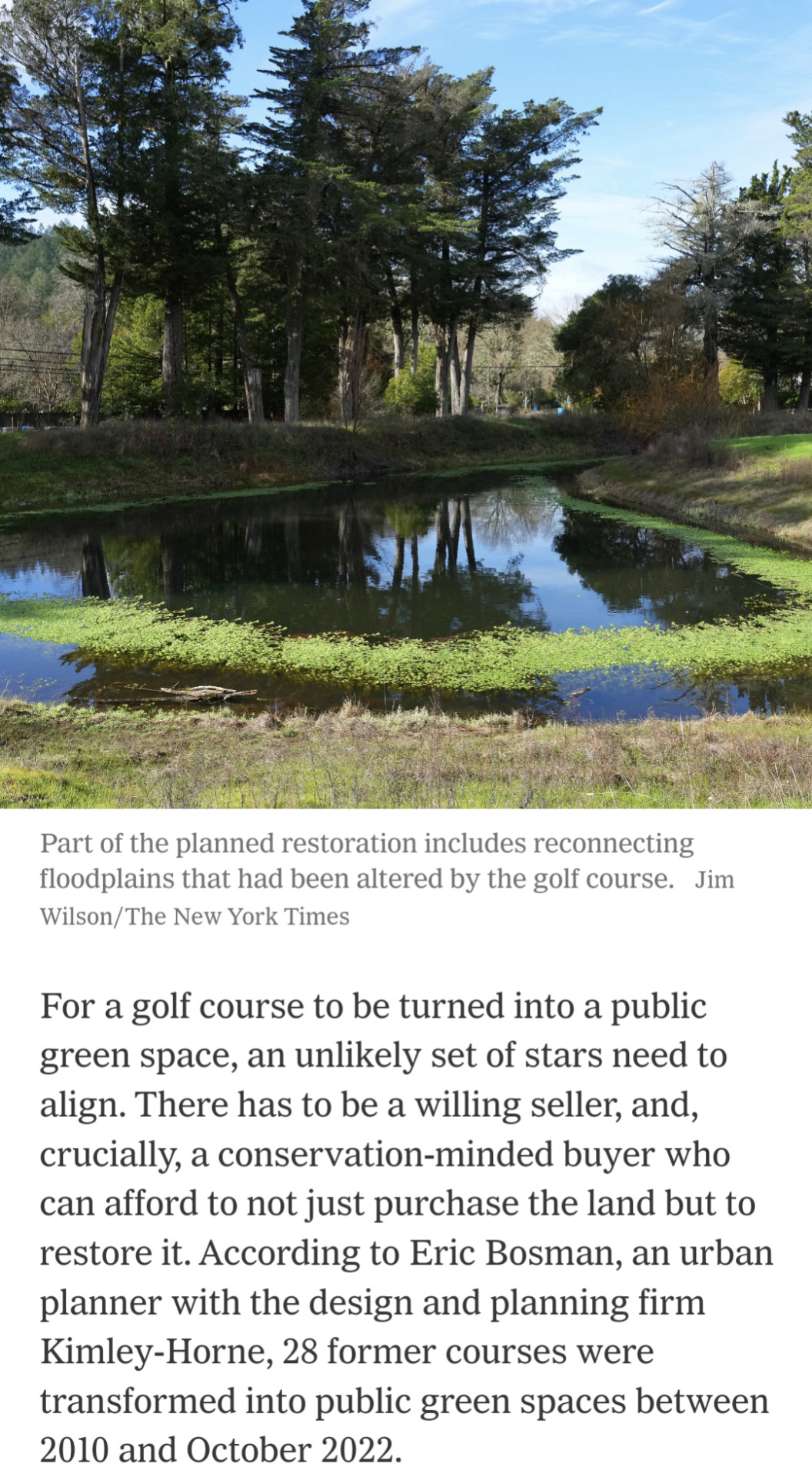
So lets be excited by the fact that people we don't even know about are working on the solutions we love to see! Turning a private space that needs thousands of gallons of water and fertilizer into an ecologically oriented public space is the future I want to see! I can say when I used to work in water conservation, we were getting a lot of clients that were golf courses that were interested in cutting their resource input, and they ended up planting a lot of natives! So even the golf courses that still operate could be making an effort.
So what I'd encourage you to do is see if there's any land or community trusts in your area, and see if you can get involved! Maybe even look into how to start one in your community! Through land trusts it's not always golf course conversions, but community gardens, solar fields, disaster adaptation, or low cost housing! (Here's a link to the first locator I found, but that doesn't mean if something isn't on here it doesn't exist in your area, do some digging!)
#solarpunk#sustainability#climate change#gardening#activism#hope#climate justice#news#new york times#golf courses#habitat#conservation
13K notes
·
View notes
Photo

I’ve seen a few ~aesthetic~ photos of rock stacks in rivers recently and this is just a reminder that you are destroying habitat when you move rocks around in rivers and streams.
In addition to dragonfly nymphs, rocky river beds are home to lots of other larval invertebrates like damselflies, mayflies, water beetles, caddisflies, stoneflies, and a bunch of dipterans. Not to mention lots of fish and amphibians!
Plus large scale rock stacking can change the flow of a stream and lead to increased erosion.
Anyway dragonfly for admiration:
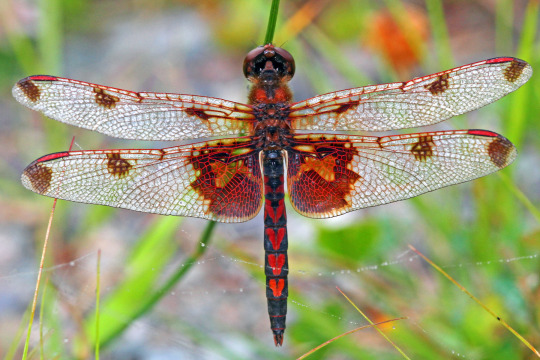
Calico pennant by nbdragonflyguy
39K notes
·
View notes
Text
If you aren't following the news here in the Pacific Northwest, this is a very, very big deal. Our native salmon numbers have been plummeting over the past century and change. First it was due to overfishing by commercial canneries, then the dams went in and slowed the rivers down and blocked the salmons' migratory paths. More recently climate change is warming the water even more than the slower river flows have, and salmon can easily die of overheating in temperatures we would consider comfortable.
Removing the dams will allow the Klamath River and its tributaries to return to their natural states, making them more hospitable to salmon and other native wildlife (the reservoirs created by the dams were full of non-native fish stocked there over the years.) Not only will this help the salmon thrive, but it makes the entire ecosystem in the region more resilient. The nutrients that salmon bring back from their years in the ocean, stored within their flesh and bones, works its way through the surrounding forest and can be traced in plants several miles from the river.
This is also a victory for the Yurok, Karuk, and other indigenous people who have relied on the Klamath for many generations. The salmon aren't just a crucial source of food, but also deeply ingrained in indigenous cultures. It's a small step toward righting one of the many wrongs that indigenous people in the Americas have suffered for centuries.
#salmon#dam removal#fish#animals#wildlife#dams#Klamath River#Klamath dams#restoration ecology#indigenous rights#Yurok Tribe#Karuk Tribe#nature#ecology#environment#conservation#PNW#Pacific Northwest
12K notes
·
View notes